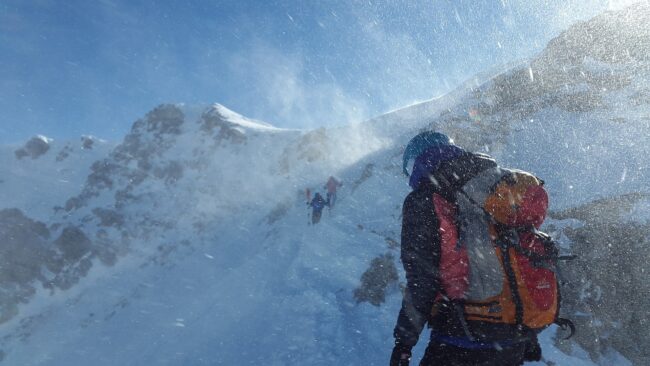Strategy, as long is on paper, is only imagination. Strategy execution is crucial.
The ones who know me, know I like to use analogies: Often, in stock photography, success is depicted as reaching a mountain summit. So let’s use this analogy to closer explain the essence of the strategy execution. And at the end, there is one little surprise!
Let’s imagine that our dream is to conquer one summit in the Himalayas.

We set one particular goal: we point precisely at the specific pick in the selected cordillera. We start studying maps; we try to understand terrain, weather conditions. We read reports of other expeditions (both successful and unfinished) – briefly speaking, we try to understand the challenge. We also recognize all hazards and analyze what would be the most optimal route, what skills we need, what people would be right, or what equipment is necessary. Finally, we estimate the time required to collect all the resources, the time needed to get there, where will be our base and what will be the stages.
With the strategy, it is similar.
We have a vision of what we want to accomplish. The target has to be ambitious and attractive. We set the criteria for measuring our success: will it be sales revenues, EBIDTA, share of market, or the level of customers’ satisfaction? – Specific goal on the specific market.
There may be several ways to get there. We can decide to take a longer (say easier) path, or direct attack on the shortest route, but probably more hazardous. We assess the risks. The strategy is also the art of choice. We collect the people with the right competencies, and we try to equip them with the tools indispensable to reach our goal depending on the selected route. And now the most important: if within the team you don’t align on how to get there, it will likely lead to disaster and disintegration. Some would be willing to take a route A and the others – route B. The chances to reach the objective diminish.
Can you see the analogy?
So what is important in strategy execution?
- First of all, one coherent and ambitious vision. The Summit!
- Secondly, recognize an environment and define all potential threats. It’s vital to discuss them in advance and perhaps “dry” simulation (simulations, scenario planning, WarGaming).
- Thirdly, resources and capabilities. Most important – people selection. Their competencies, experience, and communication skills. And of course, identify all resources needed.
- Fourthly, alignment on how to get there. You need to take all pros and cons for each alternative. Let’s put all arguments on the table and make sure everyone can speak up, so at the end, the thinking is consistent, and at the critical point of execution there is no discrepancy.
- Fifth, setting decision boundaries and empowerment. Business environment is changing like the weather. On the course there may happen a lot of unexpected. We all have to know when to push forward, when there is a chance to accelerate, and when it’s time to withdraw (even for a moment), and who will decide in such conditions.
- Sixth, acting full of determination and motivation!
There is one more aspect (to conclude)
Imagine we talk about the virgin winter ascent. And you found that several expeditions are taking the challenge. There is an element of competition! How do you assess your advantages and disadvantages? How do you see your chances to be the first?
Or, perhaps nearby, there is another summit. The summit no one else dares to dream?

So now, there are some key questions:
In your organization, is there only ONE dream that integrates everyone?
How do you want to differentiate from the other players?
If you want to differentiate, you have to set your own paths. To do so, you need openness for change and innovation.
Like Steve Jobs used to say: “Think Differently!”

